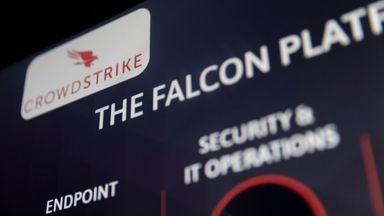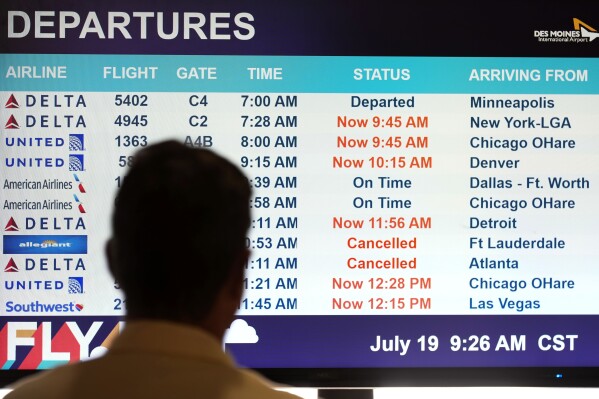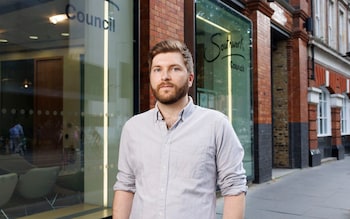Airlines, banks, hospitals and other risk-averse organizations around the world chose cybersecurity company CrowdStrike to protect their computer systems from hackers and data breaches.
But all it took was one faulty CrowdStrike software update to cause global disruptions Friday that grounded flights, knocked banks and media outlets offline, and disrupted hospitals, retailers and other services.
“This is a function of the very homogenous technology that goes into the backbone of all of our IT infrastructure,” said Gregory Falco, an assistant professor of engineering at Cornell University. “What really causes this mess is that we rely on very few companies, and everybody uses the same folks, so everyone goes down at the same time.”
The trouble with the update issued by CrowdStrike and affecting computers running Microsoft’s Windows operating system was not a hacking incident or cyberattack, according to CrowdStrike, which apologized and said a fix was on the way.
But it wasn’t an easy fix, requiring “boots on the ground” to remediate, said Gartner analyst Eric Grenier.
“The fix is working, it’s just a very manual process and there’s no magic key to unlock it,” Grenier said. “I think that is probably what companies are struggling with the most here.”
While not everyone is a client of CrowdStrike and its platform known as Falcon, it is one of the leading cybersecurity providers, particularly in the transportation and banking sectors that have a lot at stake in keeping their computer systems working.
“They’re usually risk-averse organizations that don’t want something that’s crazy innovative, but that can work and also cover their butts when something goes wrong. That’s what CrowdStrike is,” Falco said. “And they’re looking around at their colleagues in other sectors and saying, ‘Oh, you know, this company also uses that, so I’m gonna need them, too.’”
Worrying about the fragility of a globally connected technology ecosystem is nothing new. It’s what drove fears in the 1990s of a technical glitch that could cause chaos at the turn of the millennium.
“This is basically what we were all worried about with Y2K, except it’s actually happened this time,” wrote Australian cybersecurity consultant Troy Hunt on the social platform X.
But what’s different now is “that these companies are even more entrenched,” Falco said. “We like to think that we have a lot of players available. But at the end of the day, the biggest companies use all the same stuff.”
O’Brien covers the business of technology and artificial intelligence for The Associated Press. He is based in Rhode Island and focuses on how AI technology is built and the people it affects.Disclaimer: The copyright of this article belongs to the original author. Reposting this article is solely for the purpose of information dissemination and does not constitute any investment advice. If there is any infringement, please contact us immediately. We will make corrections or deletions as necessary. Thank you.



